-
Posts
493 -
Joined
-
Last visited
-
Days Won
1
Posts posted by stuman
-
-
I fully disagree with the advise to put your heel on the foot peg.
I have found that riding with the ball of your foot on the foot-peg not only provides for more cornering clearance (you don't drag your toes) but it also make you feel more balanced and in better control of the motorcycle.
In any sport where you want to be agile and balanced you are on the balls of your feet. If you're flat footed in sports it is typically bad form. We call these things we ride SPORTbikes for a reason. In this activity we do, balance and control play an important role in how we ride and I feel that you are much more balanced and in control when you have the balls of your feel on the foot peg.
That said, after suffering an ankle injury (to my left ankle) a few years ago I found that I like to put the outside peg in the arch of my foot once I have turned the bike in during right turns. I started doing this because of my injury because it took some stress off that ankle, but it became habit and I still do it now that I am recovered. In left turns I keep both pegs on the balls of me feet.
-
Sorry, from what I have seen stunting does not help you go any faster on the track. Some stunters do real well when they come out to the track, and some do very poorly. I don't think the skills required to wheelie or stoppie help you go any faster on the track. JMO...
-
Are your sliding forward in the seat on the brakes? or after you turn in?
-
No pumps on the track, sorry John.
-
FYI there are gas pumps at Willow Springs that take credit cards. Not sure about the price though, probably cheaper to bring some with you.
-
Yes, the school at Miller is a two day camp, no single day schools are scheduled for Miller this year.
-
The Pilot Power fron is pretty netural and shouldn't feel like it is really falling in when you lean it over.
I agree with the above post in that i would question the wear on the front tire. If it is pretty flat in the middle from a lot of highway riding that would cetainly cause the feeling your experiencing.
In any case I don't think what you are feeling is a loss of traction.
-
Just FYI the "two step" is covered in level one as is the "quick turn".
-
A couple of interesting questions along these same lines...
So what is the limit of the bike? How do you know when the bike has reached its limit?
what is the limit of the tires?
Do you ride to the bike's limit or to you reach your limit first ?
-
I think maybe what he means is that you have to make good use of your practice time and try to do something productive. Sometimes the more practice time you have you end up wasting it by just riding around and not really trying to improve any aspect of your riding.
It is a good idea to try to focus on improving one thing at a time durring a given practice session. Jst riding around for fun is cool too
 but just riding around probably won't improve your riding
but just riding around probably won't improve your riding 
-
If I'm not mistaken we tape over the speedos on the school's bike. In any case, yeah I would tape it over if you think it will be a distraction.
-
No you should not have to apply any pressure on the bars as you roll the throttle on.
Most times when someone feels like they have to hold pressure on the bar to keep the bike from running wide it is because they have some tension in the other arm that they have to counter. Try making sure that BOTH arms/hands are completely relaxed when you roll on the throttle. Try doing this in a corner you are comfortable with and at a pace that is pretty tame as well. If your speed is a little low that is ok, just try to stay really loose all the way through the corner while gradually rolling on the throttle.
-
Congrats! Sounds like you had a good race. You did very well for sure and were passing a bunch of guys in the beginning!
I watched the video and have a couple pointers for you.
1) You got killed on the start and lost a bunch of positions. You could do way better if you got better starts and didn't have to pass so many of those riders later on in the race. Try revving your bike up more, probably around 9-10K RPMs for a 600. Keep the revs up high when you let out the clutch and feed more throttle as your release to the clutch to keep the bike from bogging down.
2) Your missing your apex pretty consistently. What I mean is, often you are a few feet away from the inside edge of the track in the middle of the turn. Try picking a point on the track right next to the curb where you would like to apex. The make sure you look at that apex point BEFORE you turn your bike in (just before you reach your turn point).
Hope that helps, Keep us posted on your racing and good luck in the next one!
Stu
-
Does riding on the track make you a better rider on the street? Or is the stuff you learn on the track only good in a closed course environment?
What I mean is, riders that do track days or schools certainly end up going a lot faster after a day or two on the track. Are they just learning the track?
-
Keith posted some interesting insights on this subject a while back ...
-
A lot of what you learn in level three can be used on a supermoto. However, riding supermoto is really a mix of street bike and dirt bike riding techniques and body position and stuff varies from corner to corner.
I have been riding a lot of Supermoto on my KX450 as of late and I used to ride a lot of motocross as well. I have found that on the SM I ride some corners roadrace style and some dirt bike style. Some tracks (like The Streets of Willow) I ride almost completely roadrace style and it is much faster. Other tracks like Adam's Go Kart track I ride almost completely dirt bike style.
I think you would be best to rent one of our bikes and learn the road race style in Level three. A lot of what you will learn can be used on your SM later, but I think it would be easier for you to learn the road race stuff on a road race bike and then adopt it to the SM later, then to try to adjust what we would be teaching you on the fly to the SM.
Know what I mean?
-
I feel my sense of rear traction is pretty good. I have a good feel for when the tire is hooked up and when it starts to slide.
My feel for the front is something I would like to improve. I have a hard time really pushing the front the way I can with the rear. Front slides always seem to come by surprise and that is unnerving to me. I can push the front around pretty well in the dirt but I lack the ability to do that on pavement.
-
Thought I would post up a few photos from our fist school of the year at Laguna.
Here's the paddock setup...
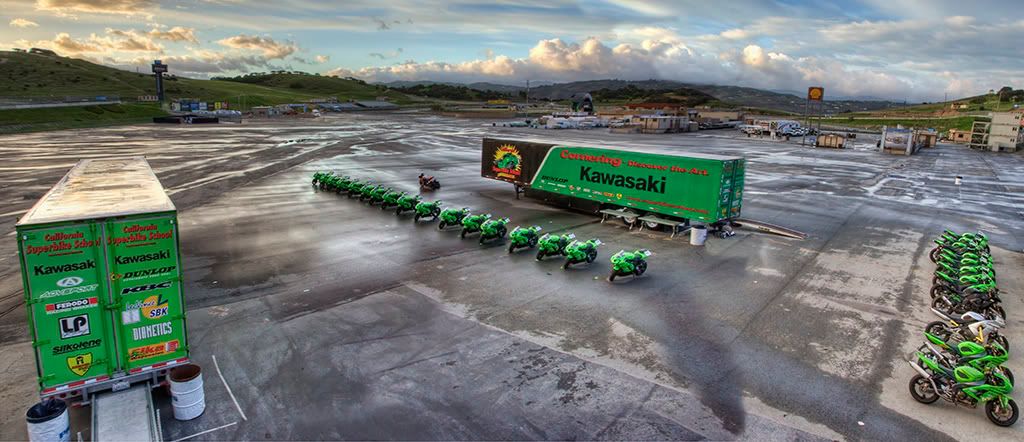
And the bikes for this year...

It was pretty wet, but that didn't stop us from having fun and I think everyone realized how much you can learn from riding in the rain.
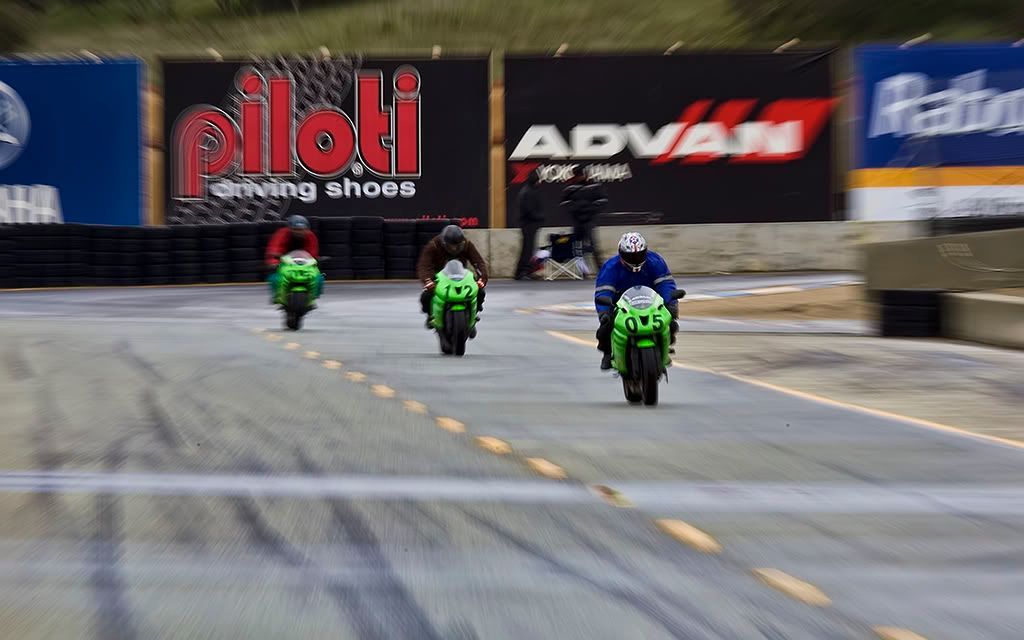
Steve (instructor) is such a ham


You can still go FAST in the rain.
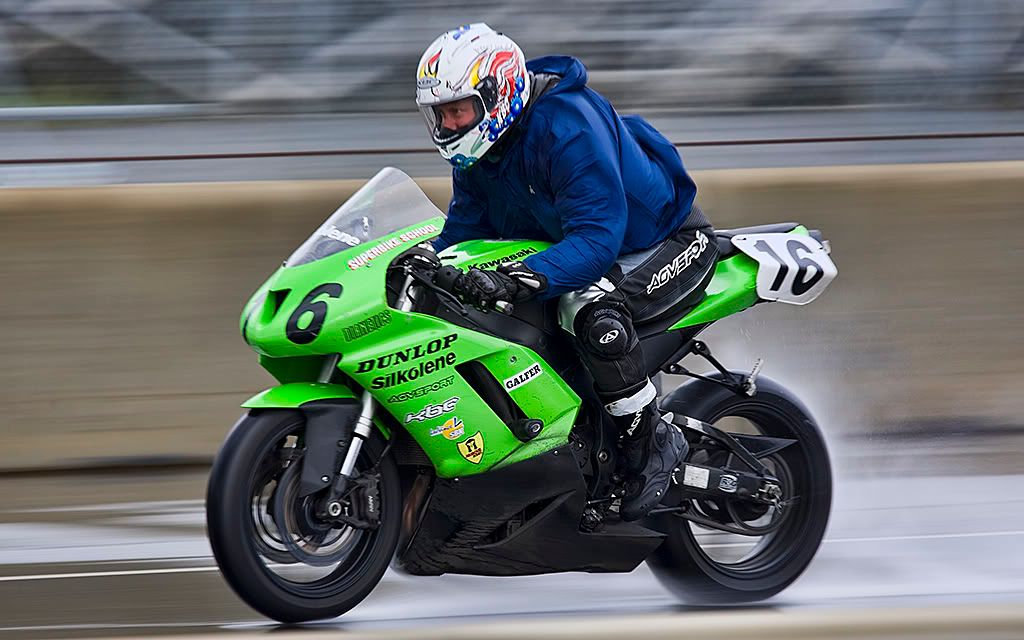
One of our moderators (Kevin) in the wet


The brake rig is great in the rain
 way easy to lock up the front.
way easy to lock up the front.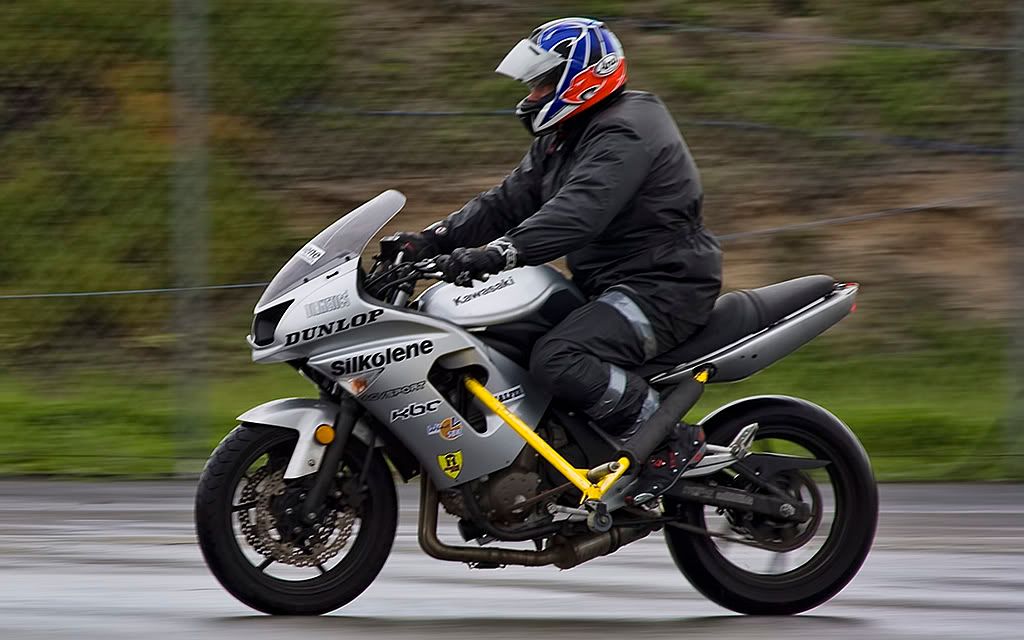
I had a nice ride home on PCH


-
What is the limit? Riders always talk about riding at the limit or finding the bike's limit. What limits how fast you go?
-
I remember following KC, and even though he doesn't ride that much, his entry speed is excellent, always has been.
I remember when I had Keith as my student (yeah, that was a strange role reversal
 ) at Black Hawk farms. Durring the first few sessions he scared the out of me while doing the no brakes drill
) at Black Hawk farms. Durring the first few sessions he scared the out of me while doing the no brakes drill 
-
If you could improve one aspect your riding, what do you think would make the biggest difference?
Try to be specific, “if I could be smoother, faster etc”… is a real easy answer but it doesn’t really say much. What one thing would take your riding to the next level?
-
I'm signed up for Code school Levels 1 & 2 using my own bike, a GSXR1000.
Everyone will say that learning on a 600 first will improve our abilities on the 1000s.
What are the pros & cons of : Learning on a 600 first vs. learning on my own 1000?
I don't know that riding a 600 first will improve your abilities riding a 1000. Riding a 600 does teach you some good things, but they can be learned on a 1000 too. Each bike (600 and 1000) has its strong points and weaknesses and you do have to ride them a little different at some levels.
Most people recommend starting out on a 600 because it is easier to learn on and less intimidating then riding a 1000.
600s (and smaller) are easier to ride because the weigh less (typically about 20 pounds for the same year as Kevin pointed out) and that makes them easier to turn in and transition full left to right (or vice versa). A 600 is also much more forgiving when it comes to throttle application.
A 1000 will be harder to turn and you have to be way more careful in how you apply the throttle because of the extra HP.
That said, if you ride a 1000 then I don't think you would be way better off doing the school on a 600. Like Kevin said, why waste time trying to acclimate to a new bike?
-
Regarding ABS:
I did some test riding a while back for a company that was contracted to do a government study on ABS brakes on motorcycles. The study was about stopping a motorcycle on both high mu (friction) and low mu surfaces. The High mu surface was your typical road surface and th low mu was wet driveway sealer (about as slippery as ice if you ask me). The tests were conducted at an air strip where this company had a test area setup (the also use it to do roll over testing for cars).
The bikes were outfitted with all sorts of sensors and data acquisition. Radar speed sensors, accelerometers, wheel speed, brake pressure (at the lever and in the line), etc. Way to much stuff on them to go into here. we tested several different bikes from just about every manufacture and many of these were euro models as ABS was not available on some of these bikes in the US. Sample of the bikes:
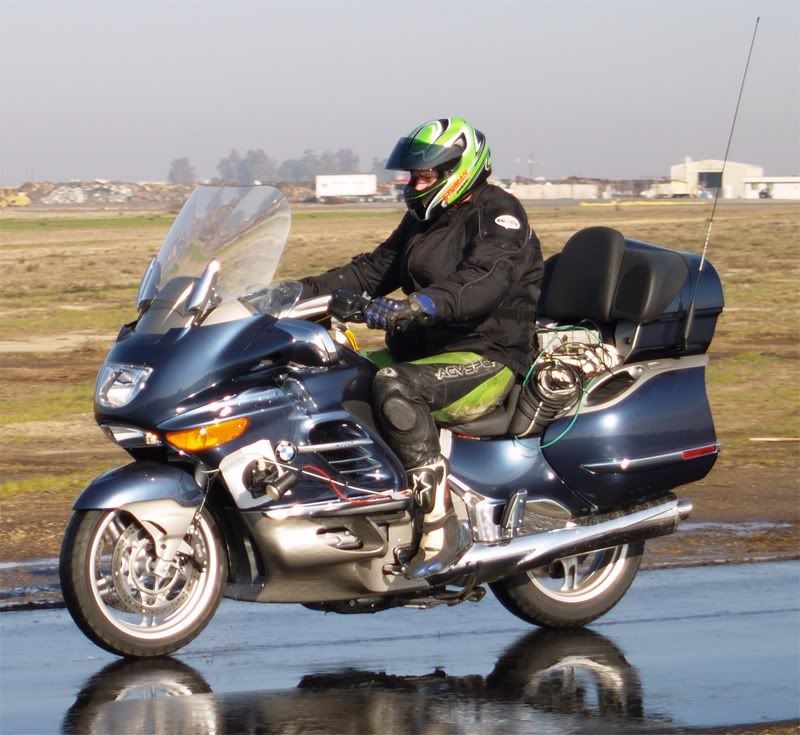


During these tests we would get up to a constant 50mph and then come to a complete stop in a straight line as quickly as we could. We would do these tests with ABS enabled and disabled. We would do several runs, as many as we needed to get what we though was going to be as good as we could do on that test.
I got to see all the data and based on that and my own experience I was able to draw some of my own conclusions regarding ABS.
On a dry surface I can stop a motorcycle fastest using the front brake only and without ABS. This is considering that I know where and when I am going to stop.
On a wet surface I can stop way faster using ABS and both brakes.
In an emergency where I would have to come to an unexpected stop, I could stop much faster using both brakes and ABS.
After these test the next new bike I purchased was a Kawasaki Concourse. ABS was a $1000 option which I gladdy purchased.
ABS rules for riding on the street and stopping straight up and down. I don't think it will save you from lowsiding on the brakes while leaned over, but I have not tested that.
I was out at The Streets for Roadracing World's 600 CC comparison test last week. I was the photographer for the event. They had a CBR with ABS and one without ABS. At the end of the day they did some braking tests with both bikes side by side. I'd like to post the results of the tests and photos I have, but you'll have to wait and by the magazine

-
Glad I asked!!! HA ! I was wondering why the lines were on the "wrong" side of the road

I like the red line much better then the blue. I try not to cross the middle of the road, ever. The red line uses all of the road so you will use less lean and make make the most open radius you can. The blue line starts on the wrong side of the road and seems to run pretty wide all the way through.
Don't worry too much about dragging your knee. It will probably just happen sooner or later and it isn't really something I would be trying for on the street. If you have a race track near you give that a try, I'm sure you would have a great time and maybe even drag your knee there. draging your knee requires more speed and that is not something you want to be pushing to hard for on the street.
Have fun!



Steering
in Cornering and Techniques
Posted
No question you can get a bike to turn without using the bars. I can coast downhill at a pretty good speed and change lanes and even go around some corners riding no hands.
Is this an effective way to steer a motorcycle? I think not.
Are we really going to beat this dead horse again?